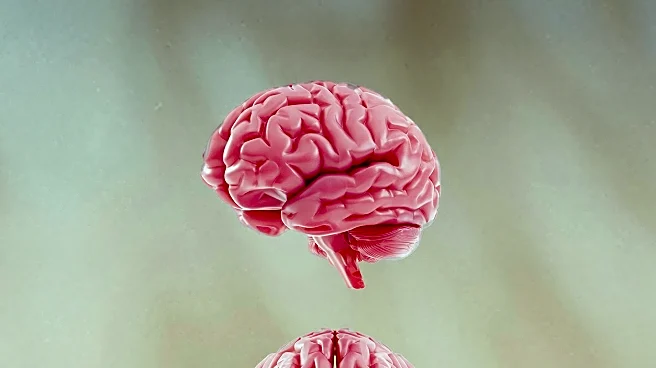What's Happening?
Researchers at UCLA and UC Riverside have developed a new computer architecture, known as an Ising machine, designed to tackle complex combinatorial optimization problems. These problems are prevalent in real-world applications such as telecommunications, scheduling, and travel routing. The Ising machine utilizes a network of oscillators, which are components that move back and forth at specific frequencies, to process information. This approach allows for parallel computing, enabling the machine to perform numerous complex calculations simultaneously. The research, published in Physical Review Applied, highlights the use of a special material, tantalum sulfide, which bridges quantum mechanics and classical physics, allowing the device to operate at room temperature. This development promises greater energy efficiency and speed compared to traditional digital computing methods.
Why It's Important?
The development of the Ising machine represents a significant advancement in computing technology, particularly in solving optimization problems that are critical in various industries. By leveraging physical phenomena for computation, this new architecture could lead to more energy-efficient and faster processing capabilities. This is particularly important as current technologies face limitations in processing power and energy consumption. The ability to integrate this new hardware with conventional silicon technology could revolutionize data processing systems, offering potential benefits to sectors reliant on complex calculations, such as logistics, telecommunications, and artificial intelligence.
What's Next?
The next steps for this research involve further integration of the Ising machine with standard digital silicon CMOS technology to enhance its applicability in existing data processing systems. Continued testing and refinement of the prototype hardware will be necessary to ensure compatibility and efficiency. As the technology matures, it may attract interest from industries looking to optimize their operations and reduce energy consumption. Collaboration with tech companies could accelerate the commercialization of this innovative computing approach.
Beyond the Headlines
The Ising machine's development also raises questions about the future of computing and the potential shift towards physics-based hardware solutions. This could lead to a paradigm shift in how computational problems are approached, moving away from purely digital solutions to those that incorporate physical processes. The ethical and practical implications of such a shift, including the impact on existing technology infrastructure and workforce skills, will need to be considered as this technology progresses.














